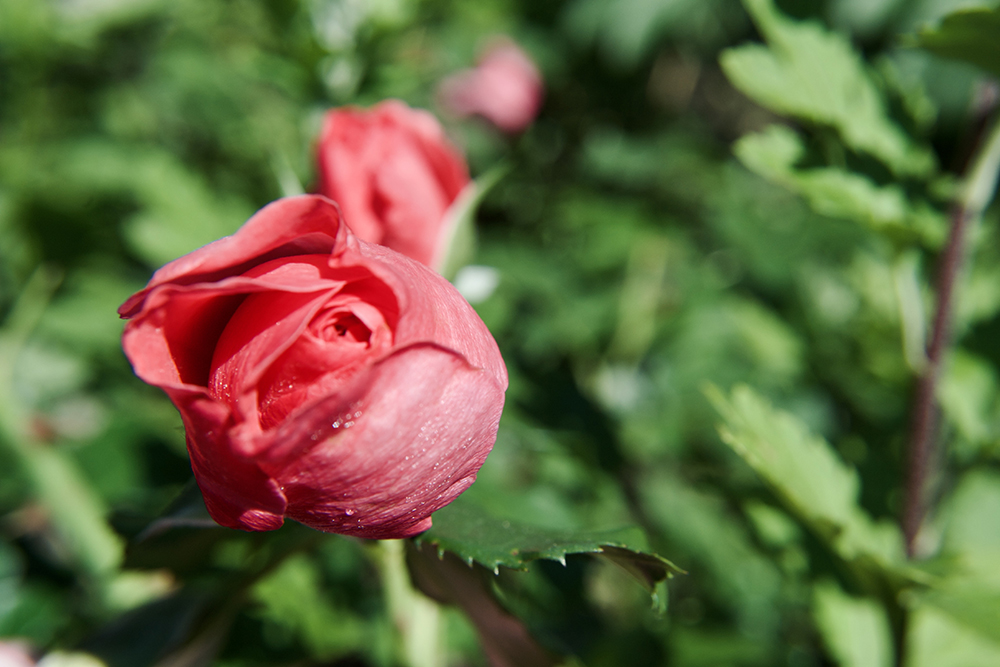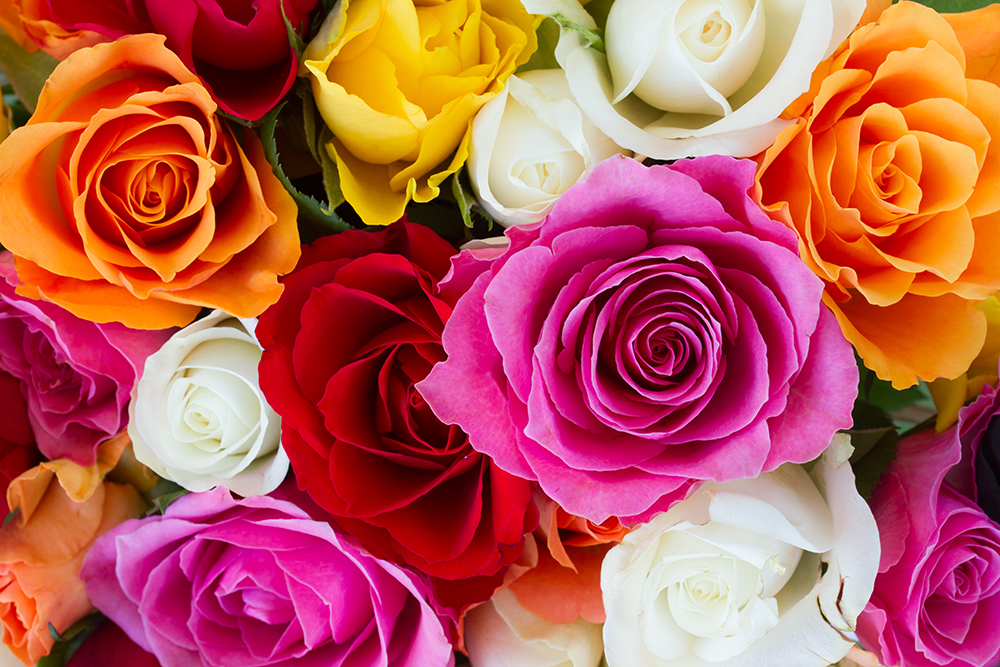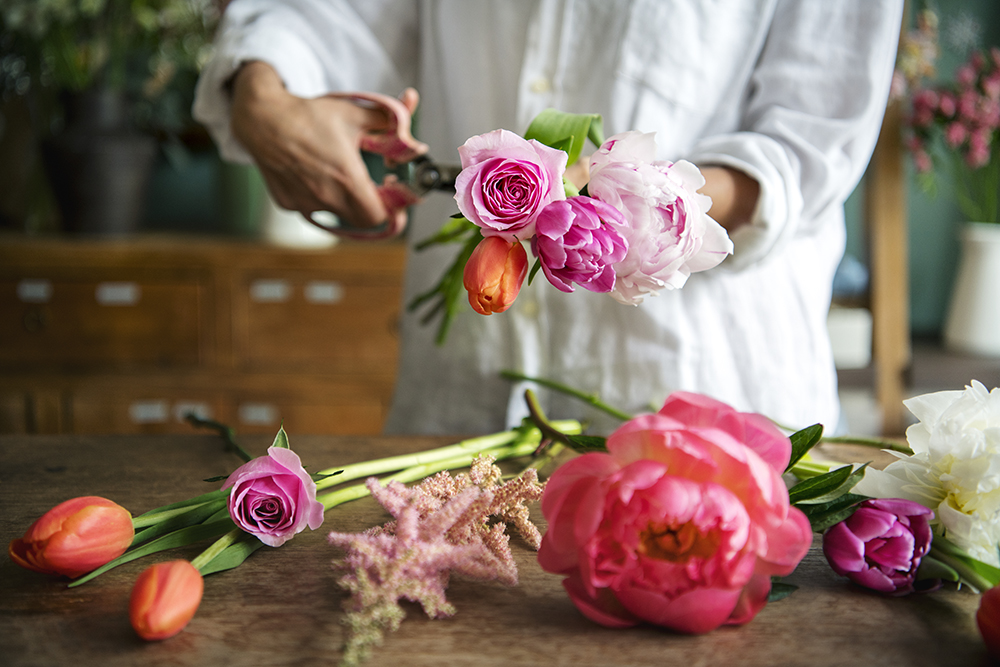Breeders have focused on developing varieties of roses with large showy flowers, more petals, long-lasting blooms, longer vase life, and disease resistance. Fragrance, as a consequence, has been neglected. However, in recent years rose fragrance is back in the conversation, as scientists have sequenced the rose genome and isolated the genes involved in giving the rose its unique perfume.
“As you walk down the fairway of life, you must smell the roses, for you only get to play one round,” said the famous golfer, Ben Hogan. Yet, when we stop to smell the roses today, there is rarely a smell to enjoy!
Over the years, rose breeders have worked on developing rose varieties with larger and more showy flowers that last longer in the vase and are resistant to disease. Along the way, unfortunately, their breeding goals did not include fragrance. So, while the rose varieties became more attractive, they no longer perfumed the air as they did in the past.
However, in recent years, there has been renewed interest among breeders in putting the fragrance back into roses! Researchers have identified the genes responsible for the fragrance in rose and have decoded the pathways that synthesize the scent volatiles. This information will be important for rose breeders to re-introduce fragrance into rose varieties.

Hundreds Of Years Of Rose Breeding
Roses are highly diverse in terms of flower type, fragrance and color. They are the most commonly grown ornamental plants in the world and are extensively used in the perfume industry. They belong to the genus Rosa, which includes both diploid and polyploid species.
Roses have been extensively bred by crossing different species, introducing new traits, and making use of natural or induced polyploids. It is estimated that 8 to 20 rose species were intercrossed to obtain the modern cultivated rose, Rosa x hybrida.
Some of the oldest reports of growing roses are from China, dating back to the time of Chin-Nun (2737-2697 BCE). One of the oldest species of rose is the Chinese rose, Rosa chinensis, which is a diploid and was introduced into Europe in the 18th century. This species was crossed with roses from Europe, the Mediterranean, and the Middle East to obtain diverse forms of roses. The most important traits obtained from Chinese roses are repeat flowering cycles and a unique scent. Rosa x hybrida ‘La France’ was developed in 1867 and was one of the first hybrids created by crossing Chinese rose with European rose to combine the repeat flowering trait with the growth and vigor traits of European roses.
Also Read: Why Are Some Flowers So Symmetric?
How Do Roses Produce Fragrance?
The fragrance of roses comes from volatile compounds. The scent compounds belong to three classes: terpenoids, benzenoids/phenylpropanoids, and fatty acid derivatives.
Terpenes are the major scent compounds in rose and can constitute up to 70% of the volatile compounds. The primary terpene in roses is geraniol, a volatile compound.
Side note for the biochemically curious: Geraniol is synthesized by the NUDX1-dependent pathway. The key enzyme needed for the synthesis of geraniol is NUDX1 hydrolase. This enzyme removes the phosphorus from the precursor molecule geranyl diphosphate (GPP) to produce geraniol.
Geraniol can also be found in other species of plants with fragrant flowers and is widely used in the cosmetic and perfume industry.
Rose species that differ in their fragrance produce different monoterpenes. For example, Rosa chinensis ‘Old Blush’ produces mostly geraniol and geranial, Rosa damascena produces (+/-)-ß-citronellol and nerol, and Rosa gallica produces high levels of nerol.

What Else Can Affect The Smell Of Roses?
Along with genetics, the fragrance of a rose depends on how old the rose is, its environmental conditions, and the presence of biotic and abiotic stress.
A newly opened flower has the most fragrance, and if a rose that was once fragrant seems to have lost its smell, you can check if the environmental conditions are conducive.
Ideal conditions for producing fragrance are temperatures that are not too hot or cold, and a lack of wind. If the plant is diseased or stressed due to overwatering or poor soil, the flowers are unlikely to be fragrant. Grafting may also alter the plant’s ability to produce fragrance.
Why Are Modern Roses Not Fragrant?
For florists, the most important traits of roses are larger size, attractive color, toughness and how long they can last in your display vase.
For rose growers, key traits are disease resistance and plant vigor. Roses for the cut flower market travel hundreds of kilometers, making toughness and durability very important. This, unfortunately, leaves rose fragrance last on the rose growers’ and sellers’ priority list.
Breeders have focused on developing varieties with large showy flowers, more petals, long-lasting blooms, longer life in the vase, and disease resistance. Unfortunately, fragrance has not been a focus of most breeding programs. As a result, after hundreds of years of breeding, many modern rose varieties no longer have fragrance.
However, in recent years, rose fragrance is back in the conversation. Scientists have sequenced the rose genome and identified the genes associated with the fragrance biosynthetic pathway. They have also made progress in understanding how rose fragrance is synthesized. This information may be used by breeders to reintroduce fragrance into rose varieties.

Also Read: How Do Plants “Know” When To Flower?’
Conclusion
Although roses are most famous for their fragrance, other traits have taken precedence in rose breeding programs. As a result, many modern commercial rose varieties do not have a notable fragrance. However, with greater understanding of rose genetics and biosynthetic pathways, breeders can start reintroducing fragrance into popular rose varieties.
How well do you understand the article above!

References (click to expand)
- Conart, C., Bomzan, D. P., Huang, X.-Q., Bassard, J.-E., Paramita, S. N., Saint-Marcoux, D., … Boachon, B. (2023, May). A cytosolic bifunctional geranyl/farnesyl diphosphate synthase provides MVA-derived GPP for geraniol biosynthesis in rose flowers. Proceedings of the National Academy of Sciences. Proceedings of the National Academy of Sciences.
- Raymond, O., Gouzy, J., Just, J., Badouin, H., Verdenaud, M., Lemainque, A., … Bendahmane, M. (2018, April 30). The Rosa genome provides new insights into the domestication of modern roses. Nature Genetics. Springer Science and Business Media LLC.
- Magnard, J.-L., Roccia, A., Caissard, J.-C., Vergne, P., Sun, P., Hecquet, R., … Baudino, S. (2015, July 3). Biosynthesis of monoterpene scent compounds in roses. Science. American Association for the Advancement of Science (AAAS).
- Understanding of floral scents blossoms in Purdue laboratory. (n.d.). Retrieved 23 August 2023, from https://www.purdue.edu/uns/html4ever/0007.Dudareva.petals.html
- Loss of fragrance in roses. (n.d.). Elisabeth C. Miller Library. Retrieved 23 August 2023, from https://depts.washington.edu/hortlib/pal/loss-of-fragrance-in-roses/
